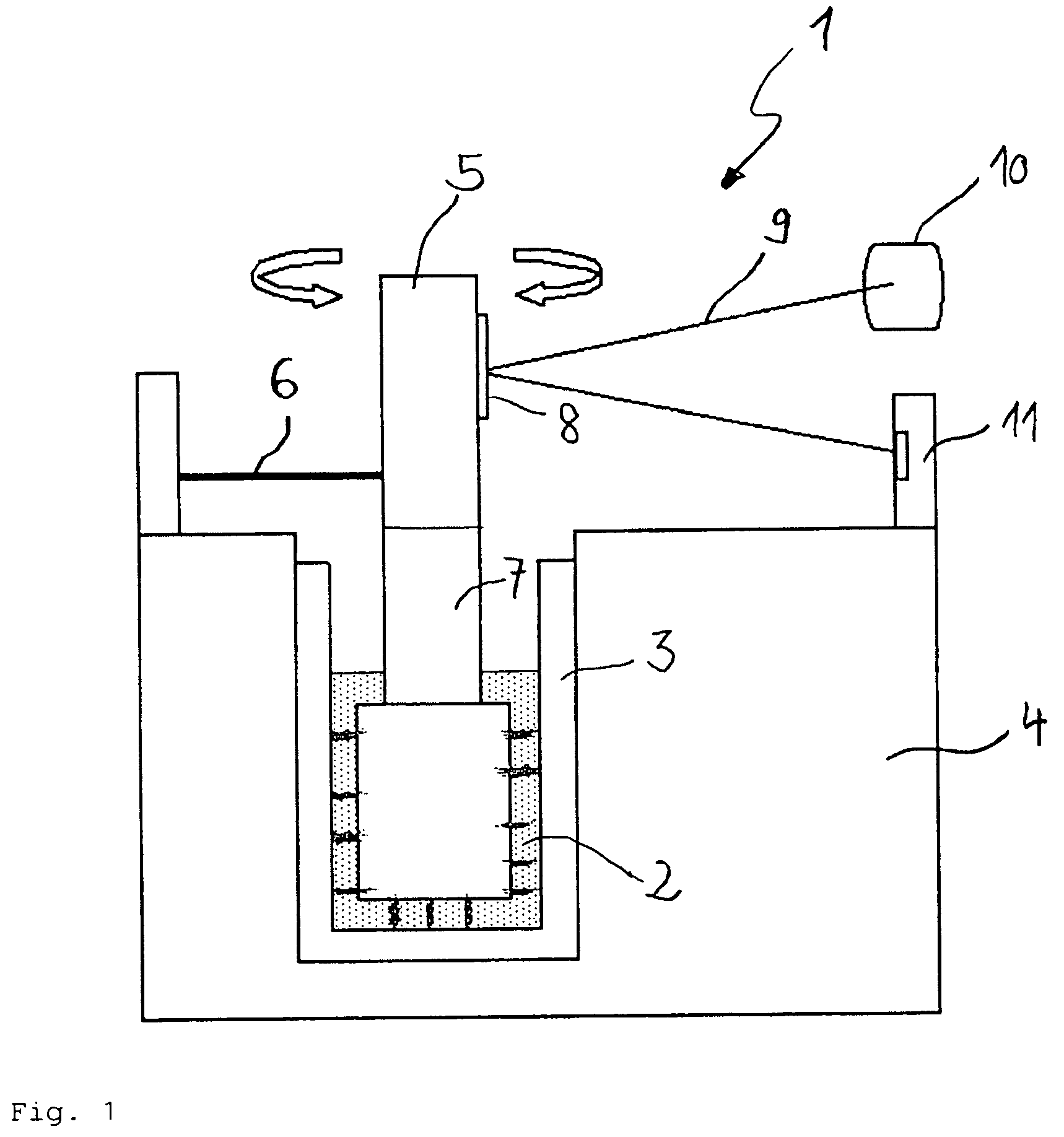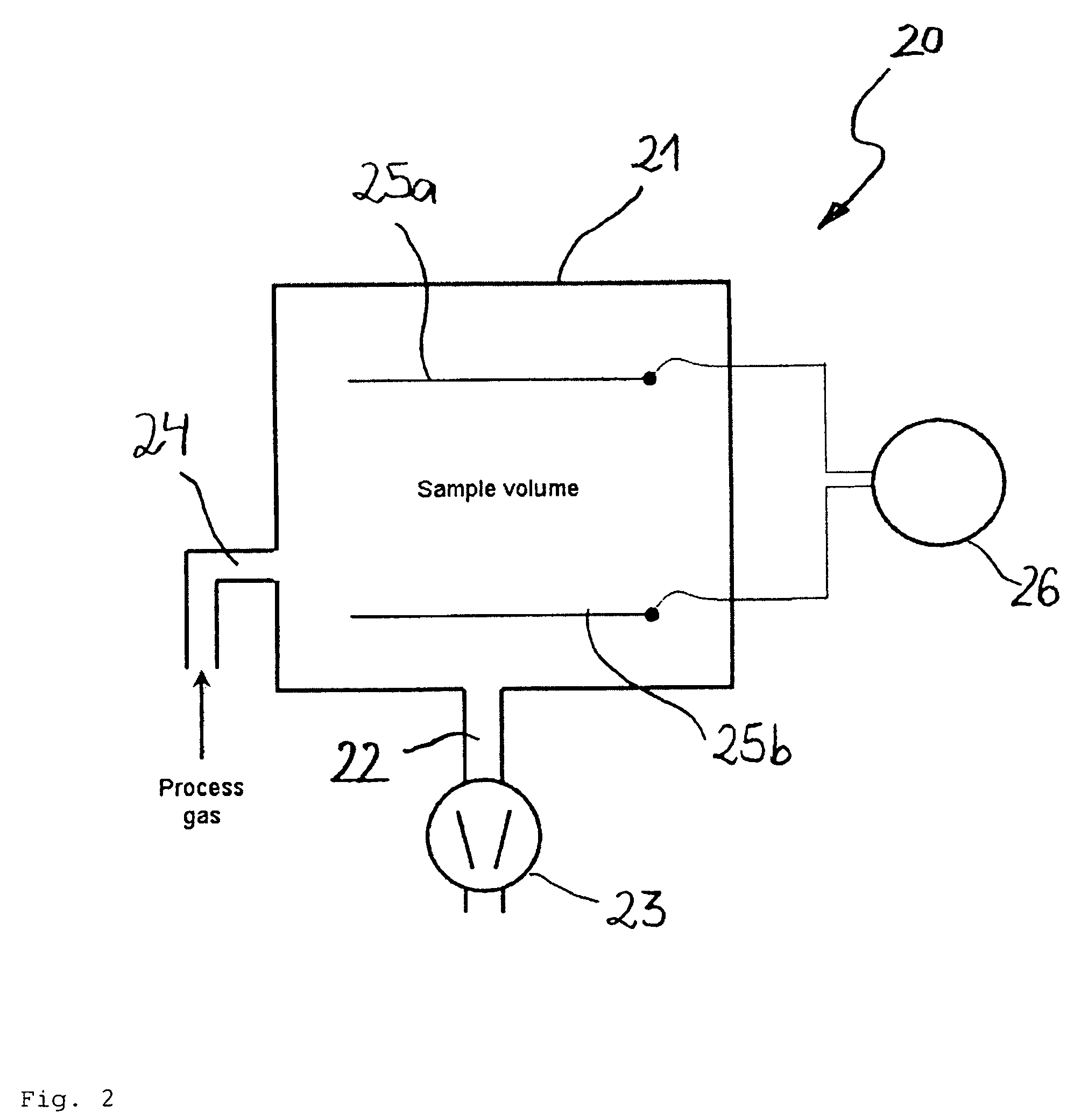Device with novel and improved surface properties
a surface property and surface technology, applied in the field of medical applications, can solve the problems of difficult interpretation of disturbed measurement, thrombin formation, and measurement can only be evaluated, and achieve the effects of increasing the adhesion strength of coagulated blood or coagulated blood components on the surface, and increasing the adhesion strength of coagulated blood or coagulated blood components
- Summary
- Abstract
- Description
- Claims
- Application Information
AI Technical Summary
Benefits of technology
Problems solved by technology
Method used
Image
Examples
first embodiment
[0080]A fourth effect of the above described surface treatment according to the invention is shown in FIG. 5.
[0081]FIG. 5 shows the ratio of the clot firmness measured after 60 minutes to the maximum clot firmness for normal (i.e. non-hyperfibrinolytic) donor blood samples. This ratio, also called CLI60 index, is lowered by partial ruptures of the fibrin network from the surface of the cup or the probe during measurements. Therefore, the CLI60 index is a good indicator for the adhesion strength of coagulated blood on the surface of the cup and the probe.
[0082]In total, 20 different donor samples have been measured in duplicate after the addition of thrombocytes (platelets) to a final concentration of about 800.000 / μl in a device for coagulation diagnosis as described above. A first set of measurements was carried out using untreated cup and probe. A second set of measurements was carried out using treated cup and probe. The lower values of the CLI60 index for measurements using untr...
second embodiment
[0087]An artery sealing according to the invention can be seen in FIG. 7. The artery sealing 40 comprises an outer sealant 41 and an inner sealant 42. The outer sealant 41 and the inner sealant 42 are connected by a connection piece 43 and sandwich an arteriotomy (artery puncture or injury) 44 to create hemostasis of a punctured artery 45.
[0088]The inner sealant 42 is placed within the artery 45 whereas the outer sealant 41 is placed opposite to the inner sealant 42 outside of the artery 45. The inner and outer sealant 42, 41 are preferably made of a bio-absorbable polymer (e.g. collagen, polyestheramide, polyglycolic acid, polylactic acid, polydioxanone) and treated by the above described surface plasma treatment to obtain a good sealing effect. The plasma treatment reduces considerably the probability of blood clot ruptures from the sealing which can cause embolism or apoplexy.
[0089]In the second embodiment, the same effects are obtained by the plasma treatment according to the in...
PUM
| Property | Measurement | Unit |
|---|---|---|
| frequency | aaaaa | aaaaa |
| frequency | aaaaa | aaaaa |
| frequency | aaaaa | aaaaa |
Abstract
Description
Claims
Application Information
 Login to View More
Login to View More - R&D
- Intellectual Property
- Life Sciences
- Materials
- Tech Scout
- Unparalleled Data Quality
- Higher Quality Content
- 60% Fewer Hallucinations
Browse by: Latest US Patents, China's latest patents, Technical Efficacy Thesaurus, Application Domain, Technology Topic, Popular Technical Reports.
© 2025 PatSnap. All rights reserved.Legal|Privacy policy|Modern Slavery Act Transparency Statement|Sitemap|About US| Contact US: help@patsnap.com



